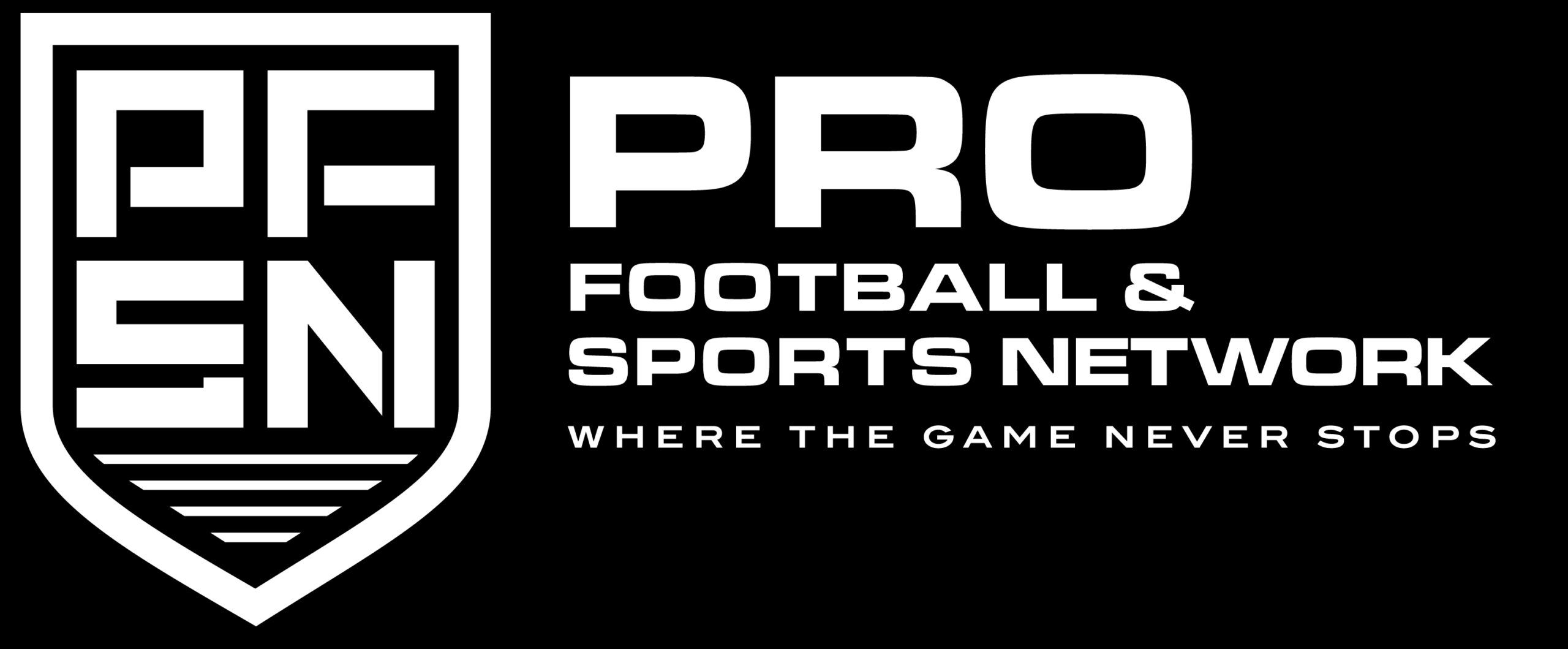As the game grows more popular year after year, more first-time managers dip their toes into fantasy football, and the 2024 NFL season will be no exception. But without a baseline of understanding how it all works, you’ll find your league more of an obligation than a pleasure, and who wants to play in a game that feels like homework?
While there are multiple ways to play this game of ours, here are some of the basics to help first-time managers get off on the right foot. See something you don’t like? Talk to your commissioner; the websites that host these leagues exist to make the consumer happy and offer more customization options now than ever before.
How To Play Fantasy Football
The NFL is king. It’s really that simple. During the season, you’re almost assured to come across football content in some form or fashion, so why not embrace it and get involved?
Whether talked into it in a work league, coaxed by a significant other, or jumping into the fray out of boredom or curiosity, people joining their first fantasy football league is a yearly occurrence — and there’s no better way to learn than to participate.
The idea of building your imaginary team is fun, but how does it all work? How can you not only enter this space but grasp what is going on and maybe even be successful?
By coming to this page, you’re taking an important step in your early development as a title-winning fantasy manager. So first of all, welcome. Pull up a chair, grab a drink, and enjoy your stay. Second, this might feel a bit overwhelming because you fear that you’re entering a world that others know much more about than you.
That’s an understandable feeling, but it doesn’t have to exist. After all, fantasy football is an incredibly simple game at its core, and if you’re not having fun, it’s time to find a new hobby.
Relationships are better with a shared interest; something football is for many in this country — embrace it and find a way to compete within an already established comfort zone!
Hopefully, after acquiring a bit of knowledge about what to expect, you can gain the confidence needed to draft, manage your team, and win like a champion. While there are dozens, if not hundreds, of different ways to play fantasy, we’ll cover the most popular ones, as most or all should apply to you and your league.
Maybe one day, you can dive into the deep end of the pool and take part in a complex league that requires year-round thought. That’s the beauty of this game; there are ways for everyone to enjoy it, no matter your level of commitment.
Drafting
For many people, the draft is the best day on the fantasy calendar. You’ve looked at the league rules (don’t forget this part!), given your fantasy team a name (sometimes a post-draft activity if you want to weave a player name into it), and are about to fill out your first fantasy football roster. It’s a big moment — or rather, a big couple of hours.
This won’t be a free-for-all selection of players. Instead, teams are built via a draft. But before the draft even begins, fantasy managers need to do some preparation.
The first step is knowing how many members are in the league. It’s important to remember when reading fantasy football recommendations that they’re typically tailored around a “standard” 10-12-person league. You might need to tweak the recommendations and adjust them for the correct round for ADP (average draft position).
Many ESPN leagues feature 8-10 teams. Some sites give you the option to have a 20-team league. There are some barriers to entry, but the number of people willing to participate shouldn’t be one of them.
Remember To Read the League’s Rules
When first learning how to play, always remember to review the rules, roster, and scoring settings for your league. Going into the draft blind could prove disastrous — you wouldn’t try to cook without a recipe, would you?
Also, what kind of draft is it? This will have the most significant impact on your strategy. Is it an auction, Best Ball, 2QB/Superflex, dynasty, keeper, or a standard redraft league?
Again, the number of options may sound overwhelming, but this is a decision made well in advance that you don’t need to worry about. You just need to understand what you’ve signed up for.
- Best Ball: No need to set up a lineup; your optimal players are plugged in after the fact.
- 2QB: Most leagues require one starting QB; this format requires two.
- Superflex: One “Flex” spot allows you to play a second QB if desired (it normally is!).
- Dynasty/Keeper: A predetermined number of players will be kept at the end of this season.
- Redraft: One year only; You’re trying to draft the best team for 2024.
There Is No ‘Wrong’ Way To Draft
Now it’s time to draft. Don’t worry, there’s no wrong way to draft/build a fantasy team. Period.
Yes, there are optimal and sub-optimal ways to go about it, but anything can work with the right execution and a bit of luck. This isn’t calculus, this is a game that features humans and plenty of variance.
Once the draft begins, managers go pick by pick in a draft order established before the draft until rosters have been filled. How many rounds this takes depends on how many roster spots your team needs to fill. It could be 15 rounds or even 25+ in some dynasty leagues. Most drafts have about 15-18 rounds.
In fairly standard leagues, you’re required to start one quarterback, two running backs, two wide receivers, one tight end, one “Flex” spot (RB, WR, or TE), a kicker, and a defense/special teams (i.e., from among the 32 NFL teams) each week.
Each roster has bench players, frequently ranging from five to eight (another part that can be customized), to help with injuries and bye weeks, not to mention the strategy of trying to predict which players are poised to have a strong week.
Some managers prioritize running backs and wide receivers early in these kinds of formats. We start these players more than others, making them the backbone of the roster. But as you learn the strategy, you’ll quickly realize how many different ways there are to build a successful team and how it varies year over year.
Luckily for us, we’re not tied at the hip to every single player. And no matter how good of a draft you had, midseason moves and managing your roster are what can make or break your fantasy fate.
Roster Management
This is what defines champions in fantasy. Outside of Best Ball, it’s rare to find a winning team that didn’t at least tweak their roster after the draft. Knowing when to add/drop or start/sit players can be the difference-maker.
Waivers
Once the draft is completed, this is the primary way to add talent to your fantasy team.
The waiver wire is the list of players who were not drafted and are essentially “free agents.” They can be added to your roster at various times during the week. The first run traditionally clears on Wednesday and then daily after that until Sunday’s games.
That said, it’s vital to see if your league’s waivers are on a first-come, first-serve basis with no set time and date. In those leagues, you can add a player anytime you want, rewarding those who are on top of the news.
Unfortunately, injuries happen. If you have an injured player, you could find someone from the waiver wire to replace him. Or did you draft someone who’s not playing well, and you’re not expecting a turnaround? Use waivers.
Is it a bye week for some of your players, or do you want to get ahead of the following week’s potentially popular roster additions? The waiver wire is your ticket to improvement.
If your roster is full, you’ll need to drop someone already on your team to avoid exceeding the roster limits. Otherwise, if you have an open spot, they can be added directly to your team.
Trading
There is an art to wheeling and dealing in fantasy football. It can be a powerful tool if used properly, but not all leagues are overly active.
Is there a star player playing poorly but with a good shot at breaking out? Trying to trade for them before it happens could be a priority move.
The key to trading is to understand that no matter how much you value a player, he’s only as valuable as how much someone else is willing to give. Christian McCaffrey might be an elite running back, but if no one will give you market value, then you’re simply not incentivized to move him at a discount.
It’s also good to remember that the manager you’re trading with has to feel like they’re also benefiting from the deal. Negotiate in good faith and listen to all involved parties if you truly want to make something happen.
Much like the NFL, most leagues have a trade deadline. Beyond the set date, there are no trades. This tends to take place between Weeks 11 and 13 in most leagues. You’ll quickly pick up which managers are receptive to trading, who are leery of it from fear of being taken advantage of, and who value their players far differently than you do.
Trading is an art form that is difficult to master.
Fantasy Football Playoffs
Weeks of work and lineup setting lead (for some fortunate managers) to the fantasy football playoffs. In most leagues, these begin in Week 15 and wrap up in Week 17.
Leagues that play their fantasy championship in Week 18 are playing with fire because teams could elect to rest their starters as they prepare for the postseason, potentially leaving you without access to the stars that carried you all season when it matters most.
However, for some websites, it’s the default, so make sure to check on this before your draft — not in the middle of December, as the race is on. When a league concludes can (and should) impact how you value some players, so make sure that every manager is aware of the season length.
Typically, playoff seeding is based on a regular-season win-loss record, though some leagues base it on the most fantasy points scored. For most leagues, the fantasy playoffs are a single-elimination bracket, with the winners progressing to the next round.
There are some sites, such as ESPN, that use two-week playoff matchups (ESPN is one of the sites that has a standard playoff setup that runs through Week 18), with the total score of your teams over two weeks determining who advances to the next round. However, the longer the matchup, the fewer the number of teams there are in the playoffs.
Winning is based partly on which team gets hot at the right time. Play fantasy football long enough, and you’ll realize the best teams don’t always win. But often, the best managers give their team a chance down the stretch, which is all you can really ask for!
So while they might not win it all most or even some years, their talent at consistently garnering winning records and postseason appearances reinforces why fantasy football isn’t simply a game of chance. When you get good at it, you’ll see the difference.
The most important part is to have fun. This is a game you’re choosing to play. Compete with people you feel comfortable with, watch the games with a little more interest on Sundays — enjoy the experience, and your feel for the nuances will come.

